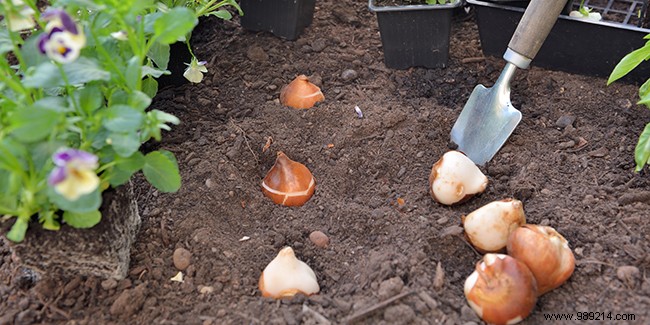
We mistakenly think that autumn is a season dedicated only to cleaning in the garden. However, it is at this time that you have to think about planting the bulbs to have flowers in the spring. As a reminder, bulbs are underground organs that will develop into a stem and then flowers! There are many varieties of fall bulbs. How to successfully plant them? Here are 6 tips and tricks to help you.
Autumn bulbs are planted from the beginning of autumn and therefore from September. However, the back seasons are getting hotter and depending on where you live, this time of year can even be hot! It is possible to plant fall bulbs until mid-November.
It would be a shame to miss out on planting fall bulbs. It is thanks to them that you can enjoy the Snowdrops from February or the tulips in March. This fall planting allows you to then take advantage of staggered blooms throughout the spring.
For the flowers from the bulbs to develop optimally, they must be planted in the right direction. But what is this meaning exactly? If you have rhizomes, tubers or even corms, you must put them in the ground with the buds upwards. If you have bulbs with a tip, like tulip bulbs, then that tip should be pointing up.
Are you a beginner gardener? Rest assured, when you buy your bulbs, the instructions are written on the packaging. If this is not the case, the sellers of garden centers can help you identify the type of bulbs and therefore know how to put them in the ground.
The bulbs must be planted deep enough so that they are not affected by the cold and develop well afterwards. The ideal depth is twice the height of the bulb. The benchmark is therefore very simple! Sometimes the bulbs need to be planted deeper. If so, you will find the instructions on the packaging. Attention ! Generally speaking, it is a good idea to plant the bulb a little deeper if you have sandy soil. The same is true if you live in the coldest regions of France.
To ensure a beautiful bloom in spring, it is important to plant the bulbs deep enough. It is also necessary to ensure that there is sufficient space between the bulbs. This must be:
If the distance to be respected between the bulbs is different, it is indicated on the packaging. This is the case with large plants.
Using a bulb dibbler makes it possible to succeed in your fall plantings like those you will do throughout the year. A bulb dibbler is a simple but incredibly useful accessory. It facilitates the planting of onions, rhizomes, tubers or corms. Operation is simple.
One of the most common mistakes when planting fall bulbs is forgetting to water them. We were talking a little earlier about the mildness of autumns in certain years or in certain regions. Sometimes temperatures exceed 20°C or even 25°C. If you find that fall is warm, consider watering your bulbs. If not, let them grow on their own. Of course, once in flower the bulbs must be watered.
Now that you know how to successfully plant your bulbs, you have to choose them! Here are the bulbs to plant in the fall to enjoy flowering in the spring.
Bulbs can be planted all over the garden. Depending on the type of flowers, their color and their size, you can choose to put them in the ground in the lawn, at the edges, near the paths and in your beds. If you have a balcony or a terrace, bulbs also find their place in a planter.